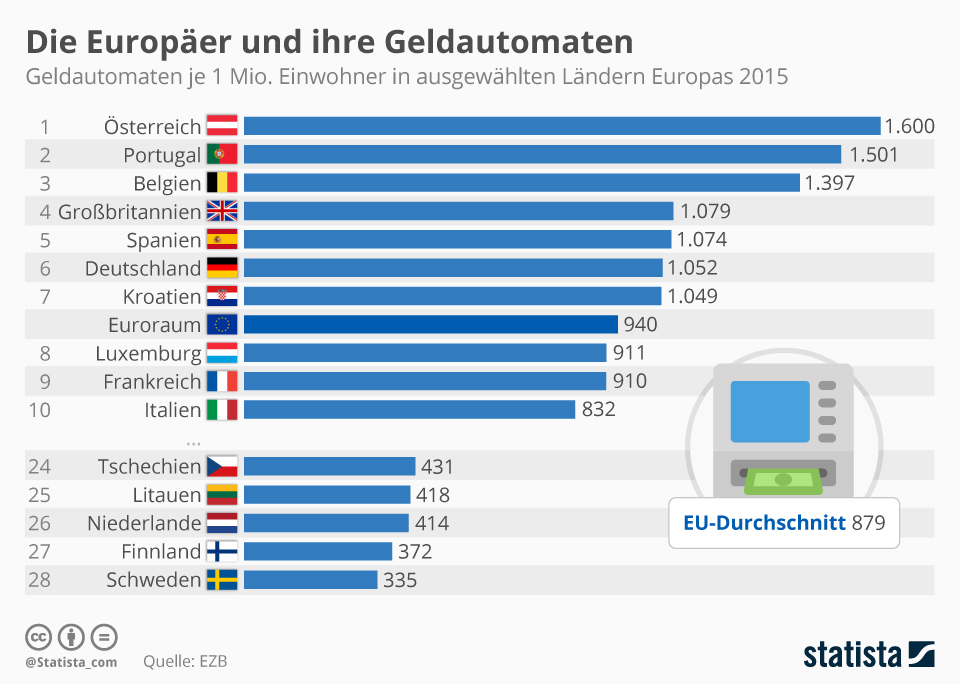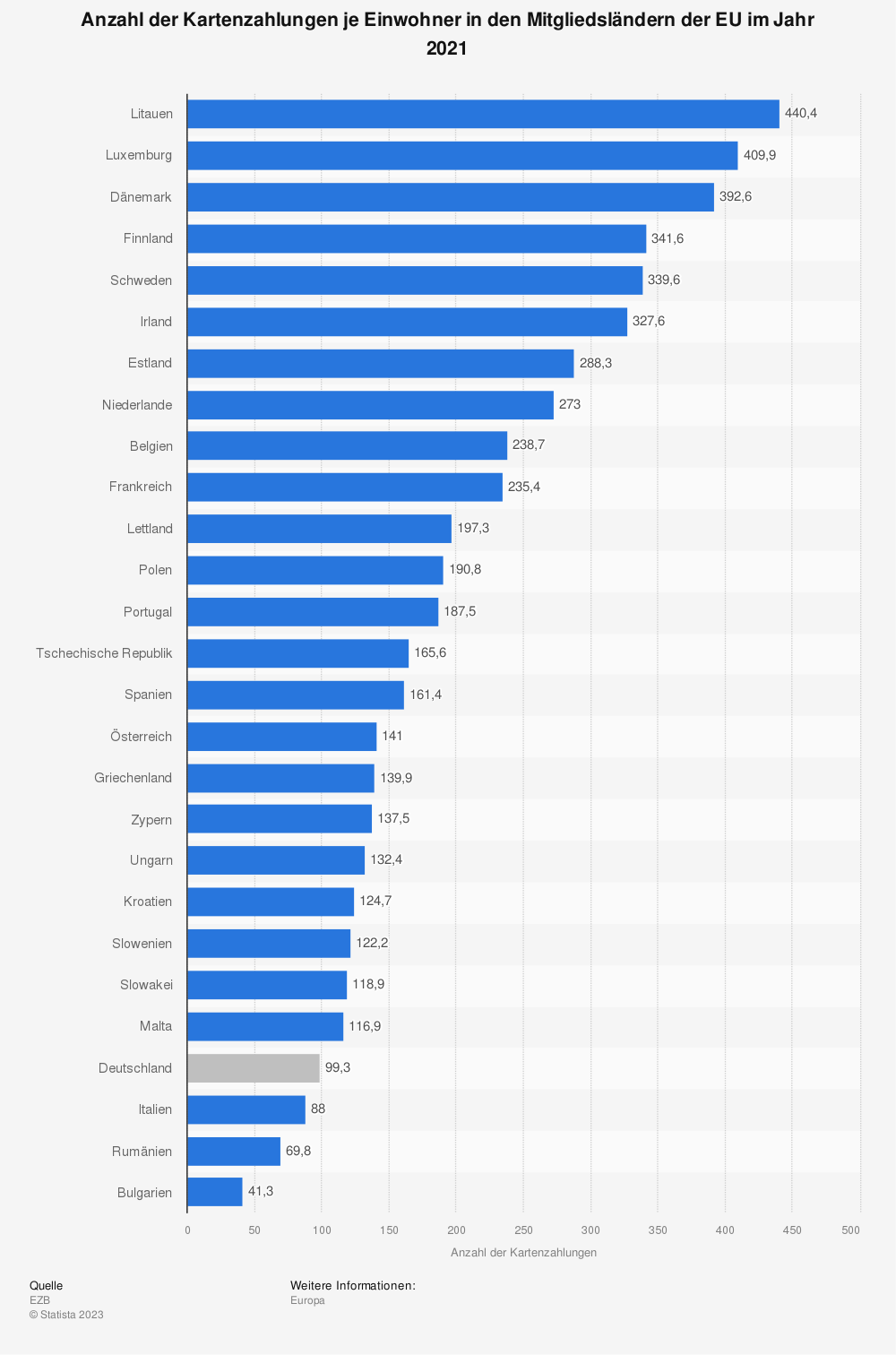Coin or contactless?
Austria clings to cash – in other countries people prefer to pay by card
With a coin or with a card? Fewer and fewer people are paying in cash in the EU
© Imago Images
How do you prefer to pay for your purchase? Cash is particularly popular in Germany, even though more and more people are paying by card. And abroad? A look at the European neighbors.
Cash is king. Where is this motto written larger than in Germany? Right, in Austria. Last year there was a referendum with the request that the legislature anchor cash payments in the constitution. “Only if cash is anchored in the federal constitution, the freedom and availability of private assets can be guaranteed and secured as a fundamental right,” the letter says.
Less than a year later, Austria’s Chancellor Karl Nehammer (ÖVP) wants to do just that. The topic is very important to citizens, says Nehammer, referring to the 47 billion euros that are withdrawn from Austrian ATMs every year. The government wants to give the population “clear security of supply”. And citizens should be able to choose whether they want to pay in cash or by card. Because the debate about possible restrictions on cash “unnerves people,” believes the chancellor.
In June, the EU Commission presented a draft law for the digital euro. The electronic counterpart to the coin is intended to complement cash and be usable throughout the euro area. The central bank plans to make a decision on this in October. (Here you can read more about it.)
Where are most of the ATMs located?
In many European countries, cash no longer rolls over the counter, or only rarely; such as in the Scandinavian countries. Since 2008, the amount of bills and coins in Sweden has decreased. Researchers at the Royal Institute of Technology and the Copenhagen Business School therefore already foresaw the end of cash in Sweden. In March 2023 it should be ready. Because of the Ukraine war, things turned out differently. There is still cash in the land of Pippi Longstocking and Köttbullar. According to a survey by the Swedish National Bank, only eight percent of Swedes pay for their purchases in cash.
However, Sweden remains one thing above all: the country with the fewest ATMs. In 2015 there were 335 vending machines per million inhabitants. He is followed by Finland. Cards and online payments also seem to beat cash in Eastern European countries, measured by the number of ATMs. Germany ranked sixth with 1052.
And Austria? With 1,600 ATMs per one million inhabitants, the Alpine Republic has the most cash withdrawal machines. And Chancellor Nehammer wants it to stay that way. How is this to be implemented? He wants to talk about this with bank representatives at a round table in September.
Cash or card? This is how other countries prefer to pay
When it comes to card payments, Austria is in the last third. Germany is fourth from last. Lithuania is at the top, followed by Luxembourg and the Scandinavians.
Overall, the number of people switching from coin to card has increased. Coins and bills were frowned upon, especially during the corona pandemic. Many people worried about whether it could transmit viruses. According to a study by the European Central Bank (ECB) on payment behavior in the euro zone, people are increasingly using EC and credit cards. 50,000 people from 19 countries were surveyed in 2021 and 2022. 59 percent of transactions are paid in cash. According to the ECB, three years earlier it was 72 percent. Online and card payments have increased.
Almost 70 percent of the Germans surveyed consider it important to continue to be able to pay with notes and coins. They are followed by the Austrians (66 percent) and Spaniards (60 percent). Cash payment is less important in Holland (46 percent). According to the ECB survey, citizens in Portugal, Spain, Italy, Austria, Slovenia and Malta pay in cash more often than in Germany.
In some countries, however, cash is used more for shady deals. For example in Italy. In the fight against tax evasion, the Italian government has therefore limited cash payments to 2000 euros. This year it rose to almost 5000 euros. Those who need to pay more can only do so by card, bank transfer or online payment.
There is no uniform cash limit across Europe. However, a maximum limit is planned, according to the European Consumer Center Germany. Invoices within the EU should then only be paid in cash up to a maximum of 10,000 euros. The EU states and the EU Parliament still have to agree to this. Should the cash limit be enshrined in law, individual EU states can decide for themselves whether they want to keep lower cash limits or not.
Sources: Federal Ministry of the Interior Austria, European Central Bank, Center Europeen de la Consommation“The national economy“, “Stuttgart News“, “The press“, “Handelsblatt“, Graber and Associates, nTV, European Consumer Center Germany




